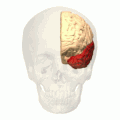Near-death experience
Near-death experience (NDE) is a profound psychological event that may occur to a person close to death or, if not dying, in a situation of physical or emotional crisis. Because it includes transcendental and mystical elements, an NDE is a powerful event of consciousness; it is not considered a medical event per se. The term was coined by psychiatrist Raymond Moody in his 1975 book Life After Life. Many in the scientific community regard these experiences as hallucinatory, while paranormal specialists view them as evidence of an afterlife.
Characteristics[edit | edit source]
NDEs are reported across cultures and can vary widely in their description and interpretation. Common elements often include an out-of-body experience (OBE), feelings of tranquility, seeing a bright light, a sense of detachment from the body, rapid movement through a long dark tunnel, and entering an otherworldly realm. Encounters with deceased relatives and spiritual beings are also reported. Some individuals recount a life review, during which they see or relive certain events from their life.
Causes[edit | edit source]
The causes of NDEs are not well understood. Several medical, psychological, and neurological explanations have been proposed, including hypoxia (lack of oxygen to the brain), anoxia (total absence of oxygen), and the release of endorphins (brain chemicals which reduce pain and induce feelings of well-being). Psychological theories suggest that NDEs are a form of depersonalization or a coping mechanism to deal with the stress of a life-threatening situation.
Research[edit | edit source]
Research into NDEs has been both scientific and clinical. Studies have focused on understanding the physiological and psychological bases of NDEs, their impact on individuals' lives, and their implications for concepts of consciousness and the afterlife. Despite the growing body of anecdotal reports, there is no consensus in the scientific community about the causes or meanings of NDEs.
Cultural Impact[edit | edit source]
NDEs have had a significant impact on popular culture, influencing books, movies, and the New Age movement. They have also sparked interest in the study of consciousness and the possibility of life after death. The phenomenon has led to the formation of support groups and research organizations, such as the International Association for Near-Death Studies (IANDS).
Criticism and Skepticism[edit | edit source]
Critics argue that NDEs can be explained by brain chemistry and psychological responses to stress. Skeptics point to the lack of empirical evidence supporting the supernatural interpretations of NDEs and caution against accepting anecdotal reports as fact.
See also[edit | edit source]
References[edit | edit source]
Near-death experience
Near-death experience
Near-death experience
Search WikiMD
Ad.Tired of being Overweight? Try W8MD's NYC physician weight loss.
Semaglutide (Ozempic / Wegovy and Tirzepatide (Mounjaro / Zepbound) available. Call 718 946 5500.
Advertise on WikiMD
|
WikiMD's Wellness Encyclopedia |
| Let Food Be Thy Medicine Medicine Thy Food - Hippocrates |
Translate this page: - East Asian
中文,
日本,
한국어,
South Asian
हिन्दी,
தமிழ்,
తెలుగు,
Urdu,
ಕನ್ನಡ,
Southeast Asian
Indonesian,
Vietnamese,
Thai,
မြန်မာဘာသာ,
বাংলা
European
español,
Deutsch,
français,
Greek,
português do Brasil,
polski,
română,
русский,
Nederlands,
norsk,
svenska,
suomi,
Italian
Middle Eastern & African
عربى,
Turkish,
Persian,
Hebrew,
Afrikaans,
isiZulu,
Kiswahili,
Other
Bulgarian,
Hungarian,
Czech,
Swedish,
മലയാളം,
मराठी,
ਪੰਜਾਬੀ,
ગુજરાતી,
Portuguese,
Ukrainian
Medical Disclaimer: WikiMD is not a substitute for professional medical advice. The information on WikiMD is provided as an information resource only, may be incorrect, outdated or misleading, and is not to be used or relied on for any diagnostic or treatment purposes. Please consult your health care provider before making any healthcare decisions or for guidance about a specific medical condition. WikiMD expressly disclaims responsibility, and shall have no liability, for any damages, loss, injury, or liability whatsoever suffered as a result of your reliance on the information contained in this site. By visiting this site you agree to the foregoing terms and conditions, which may from time to time be changed or supplemented by WikiMD. If you do not agree to the foregoing terms and conditions, you should not enter or use this site. See full disclaimer.
Credits:Most images are courtesy of Wikimedia commons, and templates, categories Wikipedia, licensed under CC BY SA or similar.
Contributors: Prab R. Tumpati, MD



